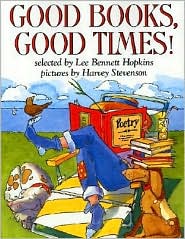 BIBLIOGRAPHY
BIBLIOGRAPHYMora, Pat. 2001.
Love to Mamá: A Tribute to Mothers. Illus. by Paula S. Barragán M. NY: Lee & Low Books Inc. ISBN: 1584300191.
SUMMARYThrough a collection of selected poems moms and grandmas are loved and celebrated.
CRITICAL ANALYSISWritten by Latino poets, which include Francisco X. Alarcón, Rigoberto González, Daniel A. Olivas, Mora has selected thirteen poems that pay tribute to the important ladies in the lives of children: moms and grandmas. The majority if the poems are free in verse; however, some do rhyme like Rigoberto González’s “Abuelita Wears a Dress.”
Written in the point of view of children all the poems focus on either a mom or grandma in various settings that range from outside of the school on the first day of class as in “I Helped My Mom Not to Be Late for Work” by Carmen D. Lucca to a traditional quinceañera to what it was like when a child’s two grandmas grew up in Cuba in Virgil Suárez’s “Las abuelitas.” The moods of the poems range from light humor as seen in “Abuelita Wears a Dress”:
Our jaws drop to our chest the evening
Abuelita steps out in a dress. Even the orange cat
glows it yellow eyes in surprise. Imagine that!
Abuelita waltzing out of the house in a shimmering
Gray gown. Abuelita only wears pants and jeans.
Because she works all day in the grape
fields we think she has no shape
outside a pair of old boots and green
flannel shirts.
to love like “Growing Up” by Liz Ann Báez Aguilar:
When I grow up,
I want to be a doctor.
M’ija, you will patched scraped knees
and wipe away children’s tears
But what if I become an architect?
M’ija you will build beautiful houses
where children will sing and play.
…
And Mami, what if I want to be like you someday?
M’ija, why do you want to be like me?
Oh Mami, because you care for people, our house is built on love,
you are wise, and your spicy stew tastes delicious.
The collection also includes poems of admiration like in Tony Medina’s “My Grandmother Had One Good Coat,” which tells of a story of how a child’s grandmother has a special black coat that she only wears to church or to the doctors and how the child saw a homeless woman without a coat and living underneath the bridge. When her grandma asks the child why her grandchild felt depressed she “went into her closet/and handed me her black dress coat/and said here put it in a shopping/bag you’ll find one in the broom closet/I don’t is that much anyway.”
Several of the poems also provide imagery and metaphor like in Mimi Chapra’s “Mi mamá cubana”:
When mi mamá cubana cooks arroz con pollo,
her smile is wider than a slice of watermelon.
Cutting green onions, the clucking tongue of mi mama goes clicktetty clack
Her silver bracelets slide up and down, jingling, jangling.
…
Closing my eyes I see palm trees swaying.
Seagulls circling. Haciendas, pink and green.
Still, sí sí, with eye open I taste salty, saffron Cuba.
Muchas gracias, mama cubana, for cooking up an island
in your tiny New York kitchen.
Another great element of the collection of poems is the use of the Spanish language. All of the poems use several Spanish words, along with “mama” and “abuelita,” that include words about food to games to parties, clothing, people and so much more. Unique from the others, Alarcón’s poem “My Grandma Is Like a Flowering Cactus” both has an English and Spanish version. To help the readers gain a better understanding of the words that are used, there is a glossary located in the back of the book that includes the word, pronunciation, and definition. The incorporation the Spanish language appeals to both English-speaking and Spanish-speaking readers because the words that are included are ones that are regularly scene many of the other bilingual books.
Barragán’s illustrations nicely compliment the poems. Presented in a two-page spread the poems are placed on a white section of the page and the illustrations fill the rest. The colorful and at times whimsical pictures of the moms, grandmas and children are stylized and are reminiscent of children paintings. Another wonderful element of the illustrations is the varying hair and skin colors of the people. Some moms, grandmas and children have lighter rather than darker skin. Some have brown hair while others have black hair. This goes to prove that not everyone is a like and don’t dress the same like in Christina Muñoz Mutchler’s poem “Mi abuela”: “Most grandmothers wear aprons/mi abuela like to wear her leather skirt.”
An introduction from Pat Mora to share why she decided to make this collection and how her mother, grandmother, and her aunt all played a pivotal part in raising her. Also, located in the back, there little biographies of all the contributing poets so that the readers and find further poetry books.
A perfect book to share around Mother’s Day or when a mom or a grandma’s birthday is coming, Mora’s collection is a must read.
CONNECTIONS*Ask the children what do they love about their mom and/or grandma and why.
*Have the students compose a little poem and illustrate about what makes their mom and/or grandma important to them.
 INTRODUCTION
INTRODUCTION



